Embracing the Unexpected: A Guide to Flowering Weeds in Your Garden
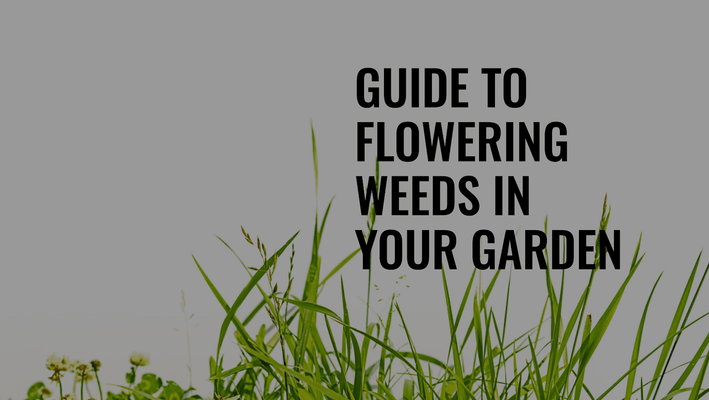
Embracing the Unexpected: A Guide to Flowering Weeds in Your Garden
FAQ
-
Are all flowering weeds harmful to my garden?
A: No, not all flowering weeds are harmful to your garden. In fact, many can provide ecological benefits, such as attracting pollinators, enriching the soil, and increasing biodiversity. However, some can be aggressive or invasive, outcompeting desired plants for resources. Identifying your weeds and understanding their characteristics is key to effective weed management.
-
Can flowering weeds coexist with my cultivated plants?
A: Yes, flowering weeds can coexist with cultivated plants, provided there's a balance. Practices like companion planting can allow flowering weeds and cultivated plants to benefit from each other. However, it's important to manage weeds proactively to prevent them from becoming overwhelming.
-
How can I prevent weed infestations without using chemical herbicides?
A: There are many natural and sustainable ways to prevent weed infestations. This can include manual removal, mulching, applying natural weed suppressants, and fostering healthy soil and plants. You can also use organic herbicides, but always with care, as they can still affect non-target organisms and the environment.
-
Are there any flowering weeds that are beneficial to pollinators?
A: Yes, many flowering weeds are excellent sources of nectar and pollen for pollinators. Dandelions, clovers, and chicory, for instance, are loved by many bees, butterflies, and other beneficial insects. However, be mindful that some flowering weeds can also attract pests.
-
Are edible weeds safe to consume?
A: Yes, several flowering weeds, like dandelions and purslane, are edible and can be a great addition to your meals. However, always make sure to identify them correctly and ensure they're free of pesticides or other chemicals. If in doubt, consult a local expert or a reliable field guide.
-
What are some common mistakes to avoid when managing flowering weeds in my garden?
A: Common mistakes in weed management include overwatering and over-fertilizing, which can encourage weed growth, and relying too much on chemical controls, which can harm beneficial organisms and disrupt soil health. Ignoring the specific conditions and needs of your garden and not acting promptly when weeds start to get out of hand can also lead to challenges. Effective weed management involves understanding your garden, observing regularly, and taking timely, thoughtful actions.
Gardening is an art, a skill, and a science, all entwined in the dance of nature. We carefully curate our gardens, selecting the perfect mix of plants for maximum visual appeal and healthy growth. We imagine rows of vibrant marigolds, clusters of serene white lilies, and perhaps even an apple tree or two. What we don't usually envision, however, are weeds. Often dismissed as intruders and destroyers of our carefully constructed paradise, weeds are usually at the receiving end of our pruners and garden gloves.
But wait, have you ever paused to consider the world of flowering weeds? Yes, that's right - weeds that bloom, weeds that can add splashes of color, texture, and life to your garden in ways you might not have anticipated. These plants, which many deem as annoyances, can also be viewed as free plants that arrive without an invitation. Indeed, some of these flowering weeds can even rival traditional garden flowers in terms of beauty and resilience.
The term 'weed' is subjective. From a botanical standpoint, a weed is simply a plant growing where it's not wanted. This could be a rose bush in a cornfield or a dandelion in your lawn. What's more, some of these so-called weeds can be strikingly beautiful, providing an unexpected charm and a touch of wildness to your green spaces. In some cases, they may also offer ecological benefits such as attracting beneficial insects, providing ground cover, or improving the soil.
But just like any other plant in your garden, weeds need to be managed. Some flowering weeds, if left unchecked, can swiftly overtake your garden, crowding out your preferred plants. The key to reaping the benefits of flowering weeds while preventing them from becoming a garden nuisance lies in proper identification and effective management.
Our Range Of Same Day Plants
So, before you reach for that weed killer or gear up for a pulling spree, let's take a moment to appreciate these resilient, adaptable, and often beautiful plants. Join us as we delve into the fascinating world of flowering weeds - understanding them, appreciating their beauty, and learning how to manage their growth effectively. Welcome to a new perspective on gardening: where unexpected blooms are celebrated, and diversity is appreciated. It's time to look at flowering weeds through a different lens!
Understanding Flowering Weeds
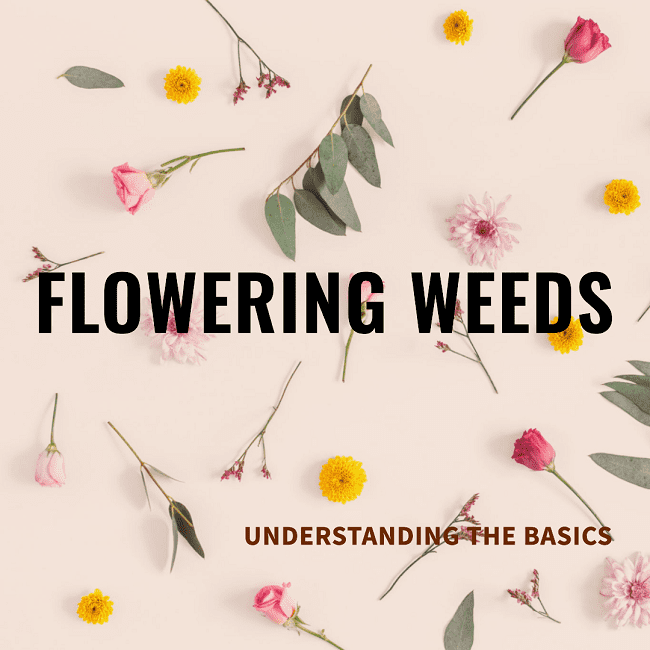
Understanding flowering weeds begins with changing our perspective. Instead of seeing these resilient plants as stubborn invaders, we can appreciate them as components of nature's diversity, bringing unexpected charm to our gardens. So let's dive deeper into what these flowering weeds truly are and take a closer look at some common types.
Defining Flowering Weeds
Flowering weeds are plants that produce blooms and have a tendency to grow where they're not intentionally planted. They often exhibit robust growth, quickly spreading and establishing themselves even in conditions where other plants may struggle. These hardy characteristics are what often deem them as 'weeds' in the eyes of gardeners.
But, as we delve deeper into understanding these flowering weeds, we'll find that each has its own unique characteristics, ecological roles, and aesthetic attributes. Their blooms may not be as large or as showy as those of cultivated flowers, but they possess a raw, natural beauty that can add an authentic touch to any garden.
Common Types of Flowering Weeds
Several flowering weeds are familiar to us, often seen sprouting in our yards, along roadsides, or in untended lots. Here are a few examples that you might recognize:
Dandelions: Nature's Delicate Suns
The dandelion, often the bane of lawn purists, is a classic flowering weed. Their bright yellow flowers can turn an entire field into a golden spectacle. When they transform into fluffy seed heads, children delight in blowing them apart, unknowingly aiding in their propagation.
Clover: A Carpet of Luck and Nectar
Clover is another common flowering weed that homeowners often see as an invader in their pristine lawns. However, this plant, with its trifoliate leaves and delicate white or pink flowers, forms a carpet of green that's not only pleasant to the eyes but also a boon for pollinators providing a rich source of nectar.
Chicory: The Blue Beauty
Chicory is a notable flowering weed with striking, sky-blue flowers. It's often seen growing along roadsides and in meadows, and while it's a perennial, it behaves like an annual, sprouting, blooming, and dying within a single growing season.
Queen Anne's Lace: Nature's Lacework
Also known as wild carrot, Queen Anne's Lace is an elegant flowering weed that boasts intricate white blooms resembling delicate lacework. Despite its royal name and beautiful flowers, it's still classified as a weed due to its self-seeding habit and invasive nature in some areas.
Purslane: A Nutritious Intruder
Purslane is a low-growing flowering weed that features succulent-like leaves and small, yellow flowers. Interestingly, it's not just a pretty face - this 'weed' is packed with omega-3 fatty acids and antioxidants, making it a nutritious, if unexpected, addition to salads and stews.
So, the next time you see these flowering weeds, take a moment to appreciate their beauty and tenacity. While they may show up uninvited, they hold their own unique charm and benefits, contributing to the biodiversity of our environments.
Appreciating Flowering Weeds
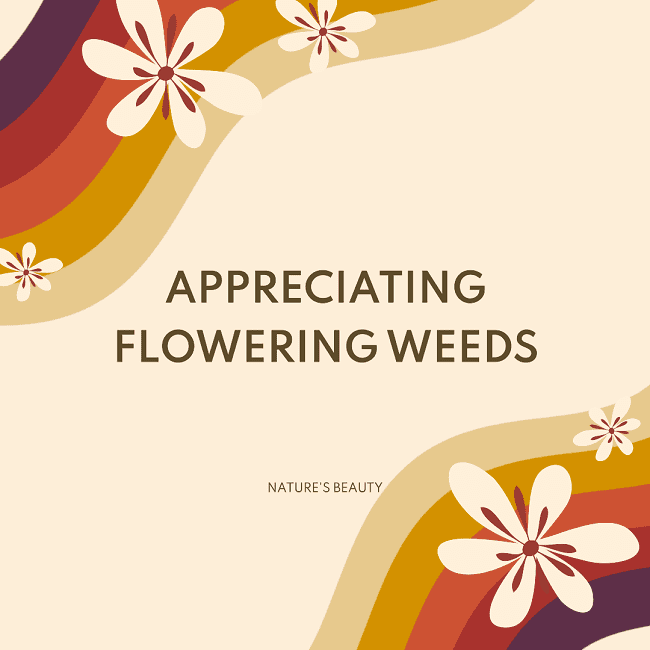
If we can shift our perspective, we will find that flowering weeds are full of surprises. Not only do they bring unexpected color and diversity to our gardens, but they also offer several ecological benefits. Let's delve into the ways we can appreciate these resilient plants.
Ecological Benefits of Flowering Weeds
Flowering weeds play important roles in the ecosystem that often go unnoticed. Firstly, they can help improve soil health. Many weeds have deep root systems that break up hard soils and bring up nutrients from the earth's depths. When these weeds die, they decompose and contribute organic matter, enriching the soil.
Secondly, flowering weeds are a boon for pollinators. Bees, butterflies, and other beneficial insects often rely on the nectar and pollen provided by these plants, especially in early spring or late fall when other blooms might not be available.
And lastly, these plants can serve as a form of natural pest control. Certain weeds can attract insects that feed on common pests, helping to keep their populations in check without the need for chemical insecticides.
Enhancing Biodiversity in Your Garden
Biodiversity is crucial for a balanced and healthy ecosystem, and flowering weeds contribute significantly to this diversity. Each weed species provides specific benefits, be it food for certain insects, shelter for small animals, or competition for other invasive species.
By tolerating, or even encouraging, a select mix of flowering weeds in your garden, you are promoting biodiversity. This not only supports a wide range of wildlife but also helps to create a more resilient garden ecosystem that can withstand pests, diseases, and weather changes better than a monoculture can.
Aesthetic Appeal and Naturalizing Landscapes

Beyond their ecological benefits, flowering weeds can also enhance the aesthetic appeal of our gardens. They offer a touch of wilderness, an element of unpredictability, and a sense of authenticity that can make our gardens feel more natural and less manicured.
Whether it's the burst of yellow from dandelions, the carpet of white from a patch of clover, or the delicate blue flowers of chicory, these plants can add unique textures and colors to your landscape. Some gardeners even enjoy the challenge of working with these plants, finding creative ways to incorporate them into their garden design.
In the end, appreciating flowering weeds is about embracing nature in all its forms. It's about understanding that each plant, even the ones we label as 'weeds,' has a role to play in the garden ecosystem. And when we learn to see the beauty in these resilient and adaptable plants, we can create gardens that are not just visually pleasing, but also vibrant, diverse, and sustainable.
Managing Flowering Weeds
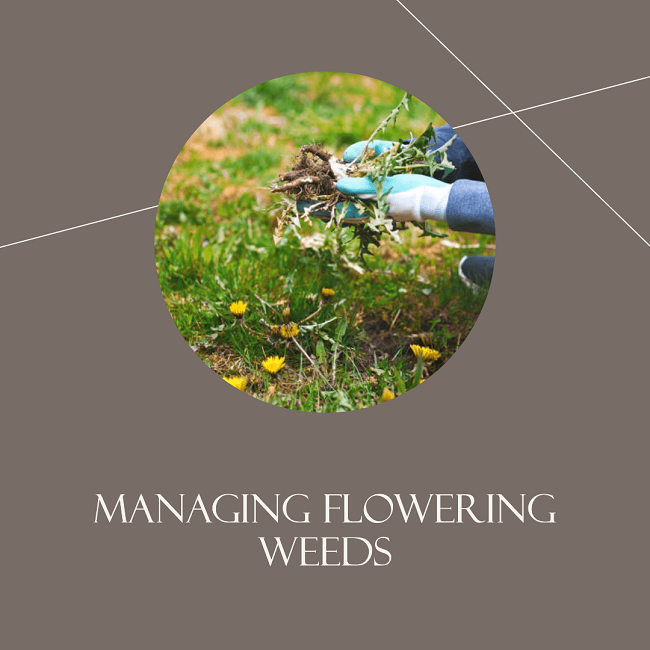
While appreciating the charm and ecological benefits of flowering weeds, it's also important to keep their growth in check. After all, these hardy plants can sometimes spread aggressively, overtaking other plants in your garden. Let's explore how to effectively manage flowering weeds while maintaining a balanced, diverse garden.
Identifying Harmful Weeds vs. Benign Ones
The first step in weed management is identification. Not all weeds are created equal. Some can coexist peacefully with your desired plants, while others might choke out other growth or even be harmful to touch or ingest. For instance, poison ivy and giant hogweed are both considered invasive and can cause skin irritation.
On the other hand, plants like dandelions, while often deemed annoying, are harmless and can even benefit your garden. Recognizing which weeds pose a threat to your garden or your health will help you make informed decisions about weed control.
Strategies for Controlling Unwanted Weeds
Controlling unwanted weeds in your garden can be achieved through a combination of manual techniques, natural suppressants, and organic herbicides.
Manual Weed Removal Techniques
Sometimes, the simplest and most effective way to manage weeds is by manually removing them. This can be done by hand pulling or using gardening tools to dig out the root system. This method is best suited for small infestations or larger weeds. However, it can be labor-intensive and might not be effective for weeds that can regenerate from tiny root fragments.
Natural Weed Suppressants
Natural weed suppressants work by making the environment unfavorable for weed growth. Mulching is a common and effective method. By covering the soil with a thick layer of organic material like straw, compost, or wood chips, you can block light that weeds need to grow while also enriching your soil.
Planting cover crops can also suppress weeds. These fast-growing plants cover bare soil quickly, preventing weed seeds from gaining a foothold.
Organic Herbicides: Balancing Efficacy and Safety
Organic herbicides offer a way to control weeds without resorting to chemicals. These products, which are derived from natural sources, work by disrupting the weed's growth. Vinegar, for instance, is a popular homemade weed killer. However, they must be used with caution, as they can also harm desirable plants if not applied carefully.
Preventing Weed Infestations: Cultural Practices
Preventing weed infestations in the first place is often easier than dealing with an established problem. This can be achieved through cultural practices that promote healthy, dense growth of your desired plants, leaving little room for weeds.
This includes proper watering, fertilizing, and pruning to keep your plants vigorous and competitive. Additionally, rotating your plants can interrupt the life cycle of weed species that have become adapted to your garden conditions.
In the end, managing flowering weeds doesn't have to mean declaring war on them. With understanding, tolerance, and effective strategies, you can keep these resilient plants in check while still enjoying their beauty and ecological benefits in your garden.
Nurturing Select Flowering Weeds
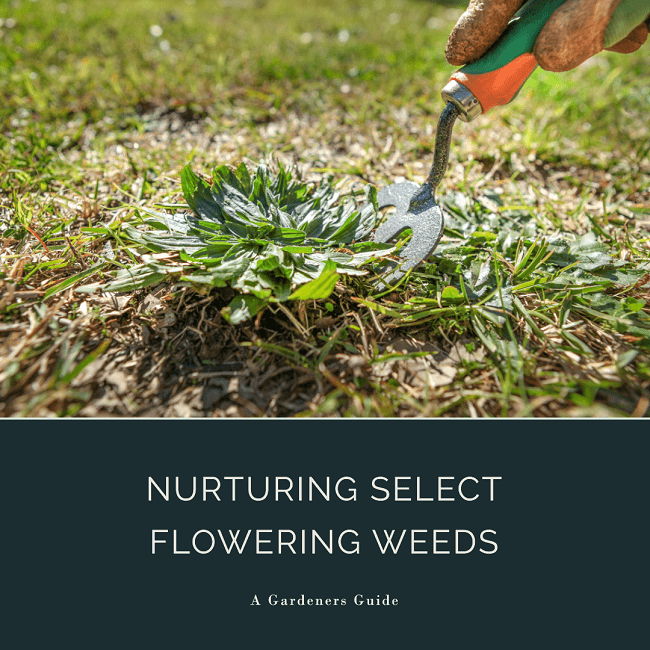
Now that we've established that not all weeds are unwelcome, let's explore how to purposefully incorporate flowering weeds into your garden. These plants, when managed properly, can bring diversity and beauty to your garden, create habitats for pollinators, and even serve as unexpected culinary delights.
Encouraging Beneficial Weeds
Beneficial weeds are those that contribute positively to your garden ecosystem. They may attract beneficial insects, improve soil health, provide food for pollinators, or simply add a splash of color. Encouraging such weeds involves identifying them correctly, understanding their growth patterns, and finding a balance where they coexist with your desired plants without becoming intrusive.
Wildflower Gardens: Embracing Controlled Chaos
One approach to nurturing flowering weeds is by creating a wildflower garden. This is a space where native wildflowers, which many consider as weeds, are allowed to flourish. A wildflower garden can be a burst of colors and textures, presenting a charming, naturalistic aesthetic.
It's not entirely uncontrolled, though. Successful wildflower gardens involve careful plant selection, based on your local climate and soil conditions, and a degree of maintenance to prevent the garden from becoming too unruly. However, the maintenance requirements are often much lower than a traditional garden, offering a beautiful, low-effort alternative for your outdoor space.
Creating Pollinator-Friendly Spaces
Flowering weeds can be a boon for pollinators. In times when cultivated plants aren't blooming, these resilient weeds might be the only source of food for bees, butterflies, and other pollinators. By tolerating or encouraging flowering weeds like dandelions, clover, and Queen Anne's lace, you're offering a lifeline to these essential creatures.
You could consider setting up a dedicated corner in your garden for flowering weeds to create a pollinator-friendly space. Pair them with other native plants that attract pollinators to boost your garden's ecological value.
Edible Weeds: A Culinary Adventure
Finally, let's not forget that many flowering weeds are not just edible but delicious and nutritious. Dandelions, purslane, and clover are just a few examples. These plants can be harvested from your own garden and used in salads, teas, and a variety of dishes. Of course, ensure the plants haven't been treated with any harmful chemicals before consuming them.
By opening our minds and gardens to flowering weeds, we are not just embracing a more natural, sustainable form of gardening. We're also rediscovering the forgotten beauty and uses of these hardy, versatile plants, and playing a part in preserving our local biodiversity.
Challenges and Solutions
Managing flowering weeds is not without its challenges. Some species are particularly aggressive, spreading rapidly and crowding out other plants. Others can be invasive, posing threats to local ecosystems. However, with understanding and appropriate control measures, these challenges can be effectively addressed.
Dealing with Aggressive Flowering Weeds
Aggressive flowering weeds, such as bindweed or thistle, can quickly take over a garden. Their rapid growth and extensive root systems allow them to outcompete other plants for resources, and they can be difficult to eradicate once established.
To deal with aggressive flowering weeds, it's crucial to act early. Regularly inspect your garden for signs of these plants and remove them as soon as they appear. Make sure to dig up the entire root system as these weeds can regrow from even tiny fragments left in the soil.
If manual removal isn't feasible, you might consider using an organic herbicide. However, be sure to apply it carefully to avoid damaging your desirable plants.
Preventing Weed Spread: Seed Dispersal and Control Measures
Weeds are masters at spreading their seeds. Some produce a huge number of seeds that can be carried by wind, water, or animals to other parts of your garden, or even your neighbor's yard.
To prevent this, one method is deadheading, or removing the flowers before they produce seeds. This can be time-consuming, especially for weeds that produce small, numerous flowers, but it's an effective way to reduce future weed populations.
Another measure is to use a mulch that prevents weed seeds from reaching the soil and germinating. A thick layer of organic mulch can also keep the soil cool and moist, promoting the health of your desired plants.
Combating Invasive Flowering Weeds
Invasive flowering weeds are a serious concern as they can disrupt local ecosystems, crowding out native species and altering habitats. If you discover invasive weeds like Japanese knotweed or purple loosestrife in your garden, it's important to take swift action.
Consult with a local extension service or a professional weed control agency for guidance, as these plants often require specific eradication methods. It's also essential to dispose of these weeds properly, as many can regrow from fragments or spread through their seeds.
Managing flowering weeds certainly has its challenges, but with knowledge and the right strategies, these challenges can be overcome. It's all about finding a balance where we can appreciate the beauty and benefits of these plants while keeping their potential downsides in check.
Harmony in Your Garden: Combining Weeds and Cultivated Plants
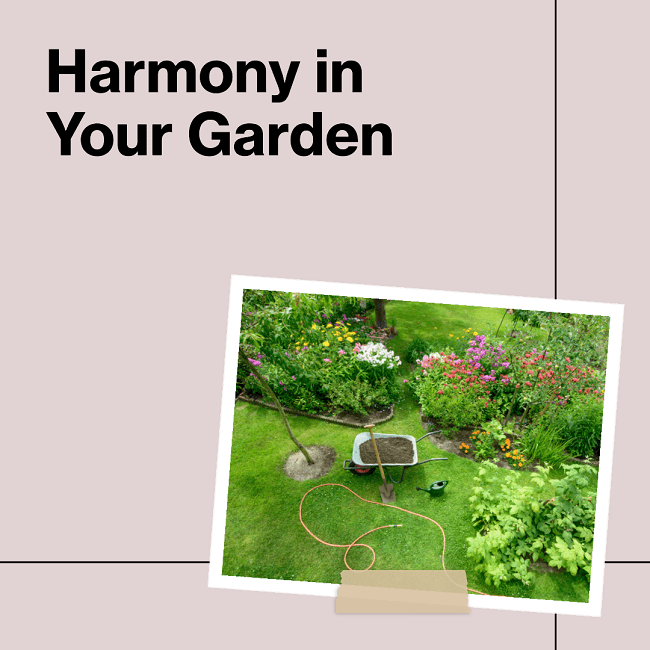
Creating a balance between flowering weeds and cultivated plants can create a dynamic, beautiful, and beneficial garden environment. The key is to integrate these diverse elements harmoniously, so they complement each other instead of competing. This can be achieved through practices like companion planting and creating thoughtfully designed plant communities.
Companion Planting: Mutual Benefits
Companion planting is a traditional gardening practice that involves growing certain plants together for mutual benefit. This can also be applied to flowering weeds. For example, clover can be a great companion for many garden plants. As a nitrogen-fixing plant, it helps enrich the soil, benefiting nutrient-hungry plants grown nearby. It also attracts beneficial insects that can help keep pest populations in check.
Similarly, dandelions, with their deep roots, can bring up nutrients from the subsoil, making them available to shallow-rooted plants. Their bright yellow flowers can also attract pollinators to your garden.
By understanding and leveraging these beneficial relationships, you can create a garden where flowering weeds and cultivated plants thrive together, each contributing to the health and beauty of your outdoor space.
Creating Harmonious Plant Communities
In nature, plants don't grow in isolation. They're part of a complex community, interacting with each other and the environment in countless ways. You can mimic this natural pattern in your garden by creating plant communities that include both flowering weeds and cultivated plants.
Start by observing how plants group together in the wild. Which species often grow together? What conditions do they prefer? How do they interact with each other and the surrounding environment?
Then, translate these observations to your garden. Choose a mix of plants that suit your local conditions and complement each other in terms of aesthetics, growth habits, and ecological functions.
Consider also the temporal aspect. At what times of the year do the plants flower? By including species with different flowering times, you can ensure that your garden offers beauty and interest throughout the seasons, while providing food for pollinators year-round.
By cultivating harmony between flowering weeds and desired plants, you're embracing a more holistic, sustainable form of gardening that respects nature's wisdom and resilience. This approach not only results in a vibrant, dynamic garden, but also contributes to the preservation of our precious biodiversity.
The Role of Timing and Maintenance
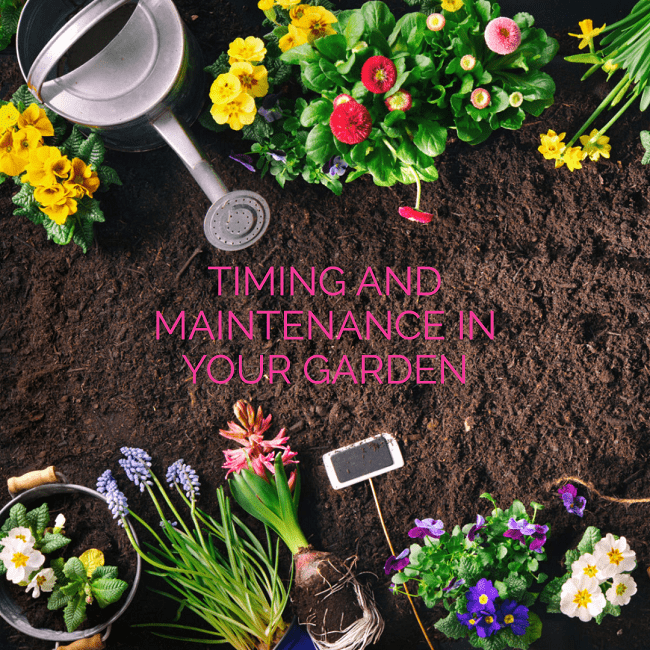
The key to managing flowering weeds in your garden effectively often lies in timing and regular maintenance. By understanding the life cycle of weeds and keeping a close eye on your garden, you can take proactive measures to maintain a pleasant and balanced outdoor space.
Timing Weed Management Activities
Weeds, like all plants, follow a certain life cycle – germination, growth, flowering, and seed production. Timing your weed management activities to this cycle can greatly increase their effectiveness.
For instance, it's generally easier to remove weeds during their early growth stages, before they've developed extensive root systems or produced seeds. Therefore, early spring, when many weeds start to germinate, can be an ideal time for a thorough weeding session.
Also, note that many weeds, such as dandelions, reproduce through seeds. If you can remove these weeds before they flower and produce seeds, you can significantly reduce the number of new weed plants in the following season.
Regular Garden Maintenance for Weed Control
Regular garden maintenance plays a crucial role in weed control. This involves not just weeding but also practices like proper watering and fertilization, soil management, and plant care.
For example, overwatering can encourage the growth of certain weeds, so make sure to water your plants appropriately. Similarly, over-fertilization can benefit weeds more than your desired plants, as many weeds are adapted to thrive in nutrient-rich conditions.
Keep your garden plants healthy, as they're more capable of outcompeting weeds when they're in good shape. This includes proper planting, timely pruning, and protection from pests and diseases.
Also, pay attention to your garden soil. Regularly adding organic matter can improve its structure and fertility, promoting the health of your desired plants and making it harder for weeds to establish.
Lastly, keep observing your garden and learning from it. Every garden is unique, and what works best for you will depend on your specific conditions and experiences. By combining timely actions with regular, mindful maintenance, you can create a garden that's not just beautiful and productive, but also a joy to tend to.
Summing Up
Managing flowering weeds can be a nuanced and rewarding journey. These often-underrated plants can add a touch of unexpected beauty and ecological value to our gardens, transforming the way we perceive and interact with them. It's all about embracing this beauty and finding a balanced approach to weed management.
Embrace the Unexpected Beauty of Flowering Weeds
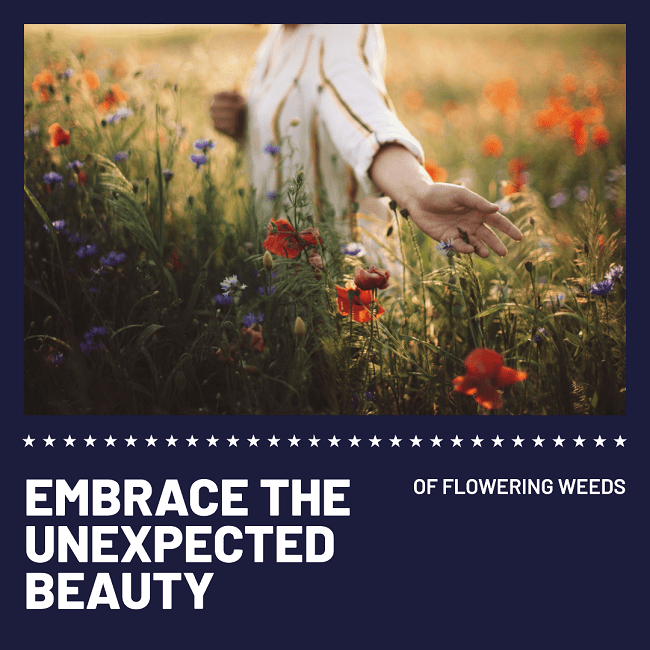
Flowering weeds, with their resilience and unassuming charm, can surprise us in many delightful ways. From the delicate yellows of dandelions to the brilliant blues of chicory, they bring a splash of color to our gardens. They support our local ecosystems by providing food and habitat for various beneficial creatures, contribute to soil health, and can even offer us culinary and medicinal benefits.
Embracing these plants means acknowledging their value, letting go of rigid garden ideals, and allowing our gardens to be a bit wild and spontaneous. It invites us to appreciate the beauty in the unexpected and celebrate the diversity and resilience of nature.
Finding Balance in Weed Management
Yet, appreciation doesn't mean letting flowering weeds take over our gardens. It's important to find a balance – one that allows us to enjoy the benefits of these plants while keeping their potential downsides in check.
This balance can be achieved through various strategies, from choosing the right companions for your cultivated plants to implementing timely and regular garden maintenance. With understanding, patience, and mindful practices, we can cultivate harmony between flowering weeds and desired plants, creating vibrant, dynamic, and sustainable gardens.
Remember, every garden is a microcosm of nature. By fostering a balanced, diverse garden ecosystem, we're not just enhancing our personal outdoor spaces – we're also contributing to the larger effort of preserving our planet's precious biodiversity.
In the end, it's about co-existing with nature and finding joy in the process. After all, gardening is not just about the results, but also about the journey – a journey filled with discovery, learning, and endless wonder.
